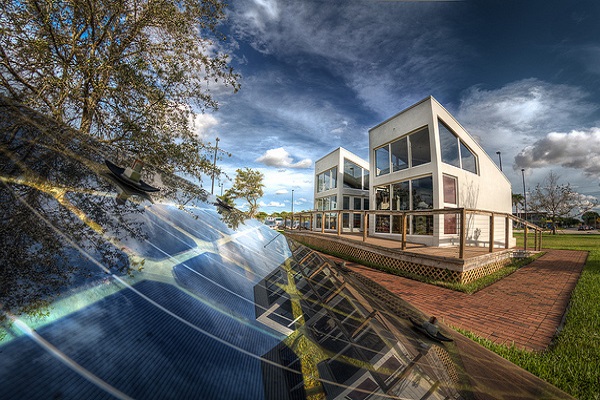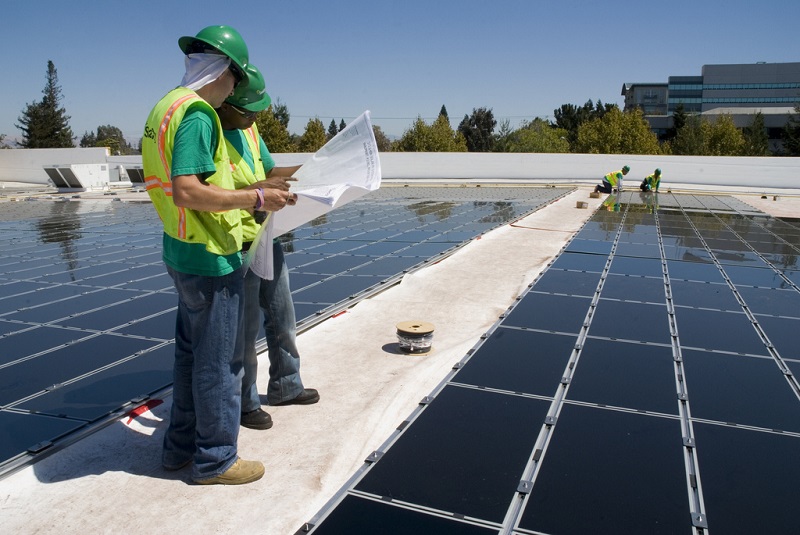Global warming is a real and present danger to the future of human life and all other life on Earth. It is defined as the gradual increase in the average temperature of the Earth’s atmosphere, including the oceans. This change is the phenomenon of climate change.
Why the fuss about climate change?
Scientists define climate change as a change in global or regional climate patterns, attributed largely to the increased levels of atmospheric greenhouse gasses (GHG), mostly carbon dioxide (CO2) produced by the use of fossil fuels. Climate change is the single biggest environmental and humanitarian crisis of our time.
Energy consumption is a major contributor to the emission of greenhouse gasses—about 60 percent of global emissions. According to the International Energy Agency, the electricity sector is responsible for 37% of all man-made carbon dioxide emissions. It creates about 23 billion tons of carbon dioxide emissions per year—in excess of 700 tons a second.
In turn, this carbon dioxide continues to heat up our planet which poses an unprecedented threat to us and the environment.
What can we do to curb this continues disastrous trend?
Today’s generation has to act aggressively in working towards reducing global greenhouse gas emissions by at least 80 percent by 2050 if we are to minimize the risk of future generations—encountering the very worst impacts of climate change. To accomplish this, we need to deploy low-carbon energy technologies at massive scales.
Solar energy, specifically photovoltaic technology—is one such low-carbon technology that can and is implemented to curb climate change and ensure our energy independence from fossil fuel energy sources like coal and oil.
Okay so…
Photons of energy from the sun is by far the largest energy resource available on Earth. All other energy sources—aside from nuclear, geothermal, and tidal—come from sunlight. Researchers have stated that amongst all low-carbon energy sources, only solar, wind, and possibly nuclear can help us reach our growing energy needs or in most cases, demand.
Solar photovoltaic energy technology is growing fast—faster than any other energy technology. Cumulative installed worldwide solar photovoltaic capacity has doubled every two years since the year 2000.
Experts at the International Energy Agency (IEA) say that if this trend continues, rooftop solar photovoltaic energy generation will meet and surpass global electricity demand to become the world’s single biggest source of electricity by mid-century.
But hold on there, what is solar photovoltaic technology?
Solar photovoltaics also known as “solar cells” are by far the leading solar technology in terms of total deployment. The photovoltaic module operates silently, at low temperatures and doesn’t require much maintenance over its 25+ year lifespan.

Florida International University Solar House at the Engineering Campus. Credit: Junior Henry via Flickr
To be a little more scientific, let’s discuss a few photovoltaic technologies. They are typically named by the material class used to absorb light: crystalline silicon (c-Si), gallium arsenide (GaAs), hydrogenated amorphous silicon (a-Si:H), cadmium telluride (CdTe), copper indium gallium diselenide (CIGS), copper zinc tin sulfide (CZTS), organics, perovskites, or colloidal quantum dots (QDs), and many more still in development.
Let’s complicate things a little further here—it’s convenient to think about these technologies in terms of material complexity, which corresponds roughly to the number of atoms in a unit cell, molecule, or other repeating unit of a material. Material complexity is related to the degree of disorder at the nanoscale. For current photovoltaic technologies, higher material complexity often translates to lower technological maturity, materials use, processing temperatures, and processing complexity.
These traits often open up new applications by enabling novel technical attributes, such as visible transparency, flexibility, and new form factors.
Remember the different types of photovoltaic technologies listed above?
Well—crystalline silicon (c-Si) is the leading technology used in various solar panels today. This technology holds approximately 90 percent of the global photovoltaics market. Experts expect it to continue dominating the photovoltaic industry for the next decade.
This—they believe—is because silicon is abundant, efficient, reliable, and proven to be durable. The best-recorded efficiency for silicon photovoltaic solar cells is approximately 25 percent. Modules available in the market are 16-21 percent efficient, with multi-crystalline (mc-Si) technologies at the low end and mono-crystalline (sc-Si) technologies at the high end.
Yes, there is much room to grow, and scientists are working to improve and push this technology further.
Can current solar photovoltaic technology deliver?
The short and most concise answer is—yes.
Solar photovoltaic technology is fast growing and is increasingly becoming popular. Even Wall Street is becoming very interested in it—students and academic PhDs too. Keeping up with developments in the solar photovoltaic industry these days is almost hectic. There are new designs and novel solar materials setting new efficiency records on a daily basis.
“Although research and development of solar power still falls far short of where scientists and engineers say it needs to be,” says Cheryl Katz a science writer based in the San Francisco Bay Area and a contributor the Yale University’s e360 publication. “Innovators are making steady progress in creating a new generation of materials that can harvest the sun’s energy far more efficiently than traditional silicon photovoltaic cells.”
“For photovoltaics technology to become a major sustainable player in a competitive power generation market, it must provide abundant, affordable electricity, with environmental impacts dramatically lower than those from conventional power generation,” according to Vasilis Fthenakis, a senior research scientist and professor of earth and environmental engineering at Columbia University, and the founder and director of the Center for Life Cycle Analysis.
“Some people argue that solar needs to be improved in order to be deployed on a large-scale,” continues Fthenakis. “I think what we have now is good enough for the best areas with enough sunlight exposure. Now if we want solutions for, say, the north of Europe, then we need technologies that have higher efficiencies.”
It is important to boost the efficiency of solar cells in order to increase the sun’s role in the global energy supply. It is true that current commercial photovoltaic cells have lots of room for improvement, but one will agree that this technology’s evolution over the past decade has been stunning.













Comments